Matthew Keller
NutritionVerse-Direct: Exploring Deep Neural Networks for Multitask Nutrition Prediction from Food Images
May 13, 2024



Abstract:Many aging individuals encounter challenges in effectively tracking their dietary intake, exacerbating their susceptibility to nutrition-related health complications. Self-reporting methods are often inaccurate and suffer from substantial bias; however, leveraging intelligent prediction methods can automate and enhance precision in this process. Recent work has explored using computer vision prediction systems to predict nutritional information from food images. Still, these methods are often tailored to specific situations, require other inputs in addition to a food image, or do not provide comprehensive nutritional information. This paper aims to enhance the efficacy of dietary intake estimation by leveraging various neural network architectures to directly predict a meal's nutritional content from its image. Through comprehensive experimentation and evaluation, we present NutritionVerse-Direct, a model utilizing a vision transformer base architecture with three fully connected layers that lead to five regression heads predicting calories (kcal), mass (g), protein (g), fat (g), and carbohydrates (g) present in a meal. NutritionVerse-Direct yields a combined mean average error score on the NutritionVerse-Real dataset of 412.6, an improvement of 25.5% over the Inception-ResNet model, demonstrating its potential for improving dietary intake estimation accuracy.
NutritionVerse: Empirical Study of Various Dietary Intake Estimation Approaches
Sep 14, 2023
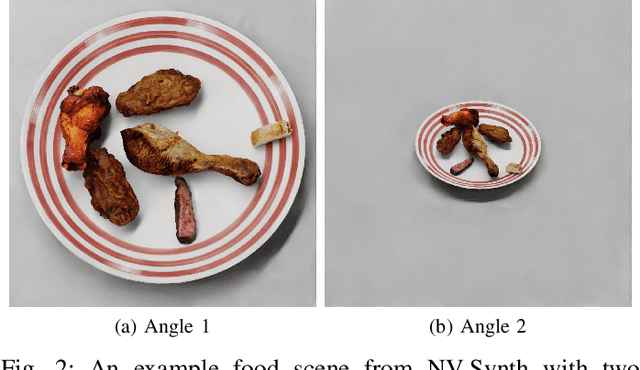
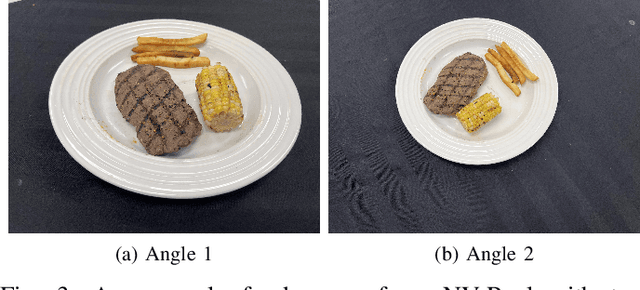
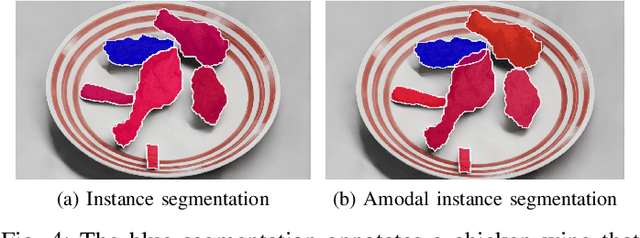
Abstract:Accurate dietary intake estimation is critical for informing policies and programs to support healthy eating, as malnutrition has been directly linked to decreased quality of life. However self-reporting methods such as food diaries suffer from substantial bias. Other conventional dietary assessment techniques and emerging alternative approaches such as mobile applications incur high time costs and may necessitate trained personnel. Recent work has focused on using computer vision and machine learning to automatically estimate dietary intake from food images, but the lack of comprehensive datasets with diverse viewpoints, modalities and food annotations hinders the accuracy and realism of such methods. To address this limitation, we introduce NutritionVerse-Synth, the first large-scale dataset of 84,984 photorealistic synthetic 2D food images with associated dietary information and multimodal annotations (including depth images, instance masks, and semantic masks). Additionally, we collect a real image dataset, NutritionVerse-Real, containing 889 images of 251 dishes to evaluate realism. Leveraging these novel datasets, we develop and benchmark NutritionVerse, an empirical study of various dietary intake estimation approaches, including indirect segmentation-based and direct prediction networks. We further fine-tune models pretrained on synthetic data with real images to provide insights into the fusion of synthetic and real data. Finally, we release both datasets (NutritionVerse-Synth, NutritionVerse-Real) on https://www.kaggle.com/nutritionverse/datasets as part of an open initiative to accelerate machine learning for dietary sensing.
NutritionVerse-3D: A 3D Food Model Dataset for Nutritional Intake Estimation
Apr 12, 2023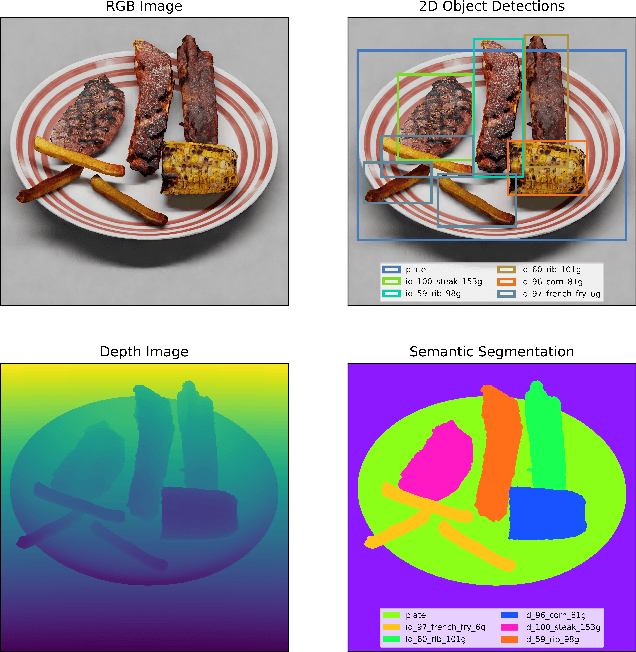

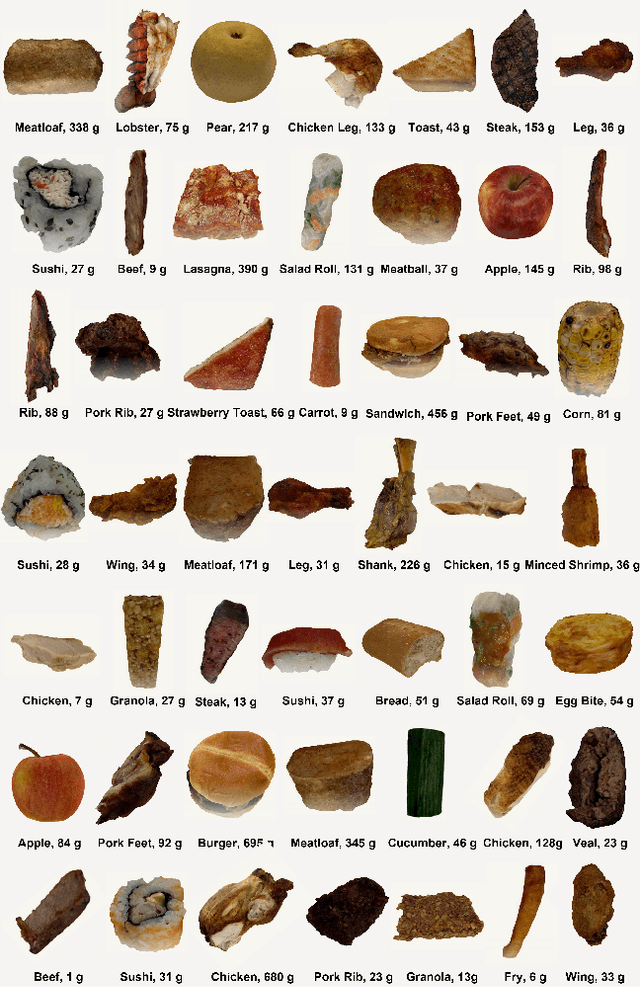

Abstract:77% of adults over 50 want to age in place today, presenting a major challenge to ensuring adequate nutritional intake. It has been reported that one in four older adults that are 65 years or older are malnourished and given the direct link between malnutrition and decreased quality of life, there have been numerous studies conducted on how to efficiently track nutritional intake of food. Recent advancements in machine learning and computer vision show promise of automated nutrition tracking methods of food, but require a large high-quality dataset in order to accurately identify the nutrients from the food on the plate. Unlike existing datasets, a collection of 3D models with nutritional information allow for view synthesis to create an infinite number of 2D images for any given viewpoint/camera angle along with the associated nutritional information. In this paper, we develop a methodology for collecting high-quality 3D models for food items with a particular focus on speed and consistency, and introduce NutritionVerse-3D, a large-scale high-quality high-resolution dataset of 105 3D food models, in conjunction with their associated weight, food name, and nutritional value. These models allow for large quantity food intake scenes, diverse and customizable scene layout, and an infinite number of camera settings and lighting conditions. NutritionVerse-3D is publicly available as a part of an open initiative to accelerate machine learning for nutrition sensing.
 Add to Chrome
Add to Chrome Add to Firefox
Add to Firefox Add to Edge
Add to Edge